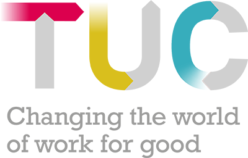Unions have seen a lot of changes in tech since our Digital Lab programme started in 2019. In particular, the pandemic gave immediate impetus to many new tech projects over 2020 and 2021.
We’ve seen some great work happening in unions over the last year, and I think it could help us focus the crystal ball for 2022. In particular I’ve got five areas where I think the union tech environment may be set for interesting things.
1. Next steps in SaaS
The first is deeper uses of Software as a Service (SaaS). Here’s an introductory briefing we did in 2021 on unions’ increasing move towards cloud infrastructure (with a big jargon sheet!).
More unions have taken up cloud office software (specifically MS Office 365) in recent years, and in parts of the movement we’ve also seen a move away from membership database products towards cloud CRM platforms like Salesforce or Dynamics.
This all helped in getting unions to work from home during the pandemic, but we’re starting to see interesting new possibilities emerging with this and I think they’re going to play a bigger part of 2022.
Some unions are making more of the potential to integrate software more easily, using the building blocks of different services to create new processes, workflows or applications.
As one example, Accord have done really nice work using links between the different apps in Office 365 to build forms and workflows that support their case handling.
And other unions have been making more use of collaboration features – working together across the union to produce content together or to share files and messaging with teams that need it.
All this could lead to a higher demand around the union for skills as more people become power users of systems. Or it could mean more need for central support to help departments craft their own tools out of the union’s new cloud infrastructure.
2. Tech tools for activists
Related to this we have the possibility of extending our IT coverage out to more people around our unions than we could before.
That could mean providing new tools to branches in a more uniform way – as NASUWT have been doing with enterprise Zoom accounts, or UNISON with their branch website platform.
And we’ll also see more distributed organising – giving activists the tools to directly collaborate on campaigns.
UCU worked with us in 2020 to test peer-to-peer SMS tools for getting out the vote in a balloting campaign. They’ve recently scaled this to a union-wide programme, across ballots at dozens of institutions.
We’re also seeing unions working on allowing reps to have defined access to areas of their CRM systems, on low cost limited licences or using APIs. We’ll likely see more apps that bring the power of the union’s systems direct to activists in the workplace.
3. Tech stacks and shadow IT
And that brings us to the dark side of IT. As we see more innovation, spread across wider parts of the union, we’re also seeing the growth of shadow IT systems.
People across teams, regions and branches are signing up for google drives, surveymonkeys, zoom accounts, mailchimps and so on.
But this can lead to lots of unintended consequences.
How can the union have oversight of personal data which could be shared across services we don’t even know people have set up? That could be a real problem if people are seeking to enforce their rights under GDPR.
How can we manage training and support for a suite of tools that grows every week? Or plan budgets that could better be spent by bringing dozens of mini accounts together?
Shadow IT is right at the top of the TUC’s own tech risks register, and we’re going to be making big efforts to get on top of it.
I’m hoping 2022 is a year in which we find ways to understand our staff and activists’ needs so we don’t stifle innovation, but can then define sustainable tech stacks for our unions that we can safely and realistically support to get that work done.
(Our October Digital Lab workshop helped us uncover a lot more on this – you can see the write up here)
4. Mainstreaming digital in unions
The place of digital is also changing within unions, reflecting a change we’ve seen in organisations more widely.
I’ve been working in digital for long enough to remember when it started to move from the IT department to the comms team, based on the idea that digital was a broadcast marketing medium that scaled at no cost.
But comms were just the first power user department for digital, not an end point. Now we need to mainstream tech into our unions to help do all our work in a way that meets our members’ expectations for it.
And we’re seeing new ways to approach this. PCS and Unite have brought the digital function closer to membership teams – the engine room of the union, which can help focus on meeting member expectations. Others are allying it with strategy teams, acting as an enabling resource for all departments.
Elsewhere, IT departments are seeing the need for a strategic IT function increase, or colleagues are retraining into specialist roles that are new for the union, such as data science. In the TUC, our own information services team have taken on a larger role in the design and provision of IT services – building on their expertise in document management ideas and GDPR compliance.
As we look at mainstreaming digital, we’ll also need to think about digital leadership and the ways of working that we’ll need if we’re going to be able to include a greater range of union people in digital change projects.
5. New models for tech ownership
In recent years we’ve moved from long term, very defined IT products, to a faster cycle of testing and building, often based on platforms. We’re going to need a lot more tech tools in our operations. We’re going to need to think about what we buy, rent or build. And there may be new options for us.
One issue is that the union market isn’t big enough to support very union-specific products from mid-size providers. In the US and UK we’ve seen providers bought out and in some cases change direction away from our interests.
And on the other hand, whilst the big platforms like Microsoft and Salesforce may be hugely flexible, it’s only flexibility on their terms, and even big unions are only small fish with them. But equally most unions don’t want the big distraction and risk of building and maintaining their own software in house.
I think we may end up with a greater range of suppliers over 2022.
I’m particularly interested in a phenomenon we’re seeing more often – of unions working together with co-ops to help make union-specific products sustainable, with unions more closely involved in the governance and roadmap going forward.
The first and biggest example of this was Action Network in the US, incubated eight years ago with AFL-CIO money to build progressive software, which would always address the needs of the unions on its board.
Outlandish’s Harry Robbins proposed something like this in 2018 as a “Union Digital Services” to echo GDS. IG Metall and a coalition of unions in Germany are investing millions in starting an ambitious co-owned tech firm, Labour Digital, to design, build and support what they need.
On a smaller scale in the UK, NEU have been developing conference voting software with the ChangeLab co-op in the UK. They released it on a free licence to other unions, to help broaden the user base in the movement, making support and development more sustainable for the future.
We’re working in a similar way for our Join Together tool, which has been incorporated as a co-op. We’ve given the developers the initial cover to build something in a way that gets it to release with a few unions and lets them devise a sustainable business model to keep service levels running properly. At the same time making sure unions have a role in the product’s direction.
What do you think?
As we’re planning themes for the Digital Lab programme in 2022, we’d love to hear what you’re seeing as priorities for digital in your unions over the coming year.
As ever we’ll be working on a mix of networking events, trainings, reports and collaborative projects, and we’re keen to make sure that it matches our affiliates’ needs.

